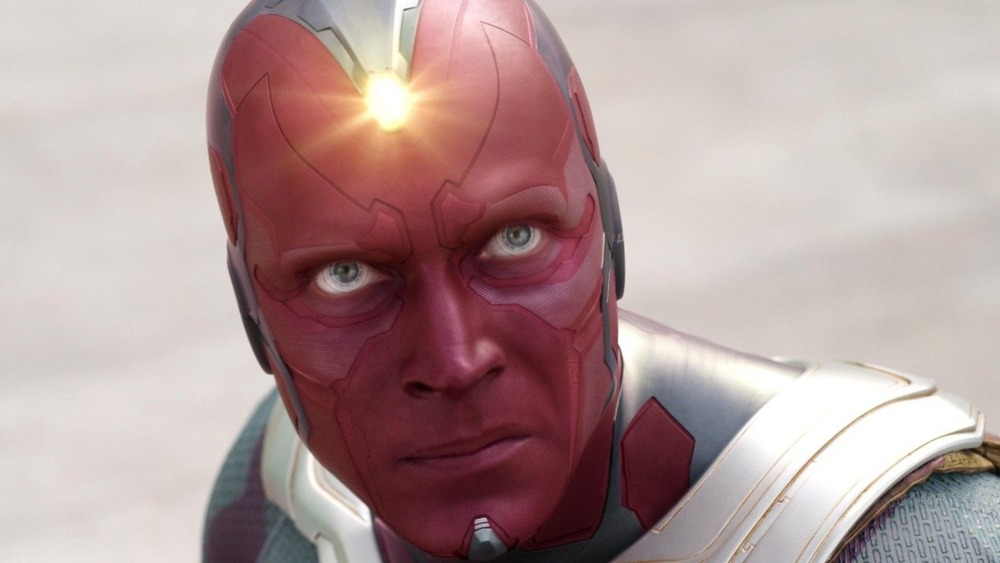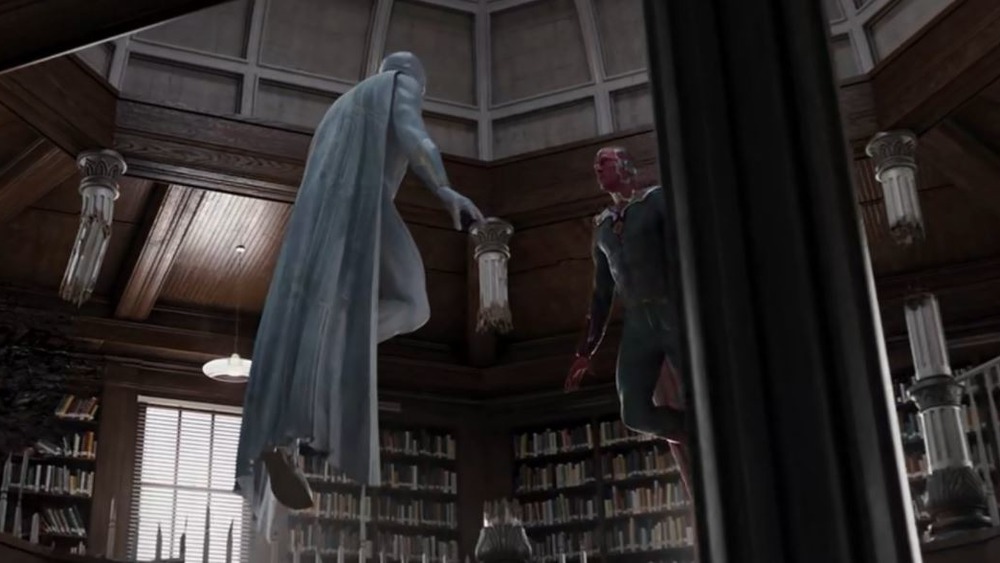WandaVision Finale: Vision's 'Ship Of Theseus' Metaphor Explained
Contains spoilers for WandaVision episode 9.
Over its nine wild episodes, WandaVision deals with ideas and concepts that you probably never expected to see in a Marvel Cinematic Universe outing — or, for that matter, any sort of TV show at all. The appropriately named final episode, "The Series Finale," finally brings some of that old-school MCU action in the mix, yet keeps the fight scenes in line with the show's penchant for mood whiplashes. Wanda (Elizabeth Olsen) finds her Scarlet Witch mode in a psychologically charged magic battle with the powerful Agatha Harkness (Kathryn Hahn). Darcy Lewis (Kat Dennings) casually pins Tyler Hayward (Josh Stamberg) in his SUV after Monica Rambeau's (Teyonah Parris) newfound abilities take care of his firepower. Oh, and as for Pietro (Evan Peters) ... well, at least we now know what Agatha's sitcom husband Ralph has been up to all this time.
Arguably the coolest fight twist in the series finale is the battle between Wanda's Westview version of Vision (Paul Bettany) and the white Vision (also Bettany), freshly reactivated by S.W.O.R.D. and out for a kill. The battle starts exactly as you'd imagine, with punches, flight, and phasing powers in full, glorious display. However, the pair soon finds themselves in the town library, and Wanda's Vision turns the battle into a philosophical discussion that ultimately convinces white Vision to stand down. It's the perfect face-off between two dramatically different versions of the MCU's most pacifist and analytical character, and possibly the only superhero fight in which the finishing "blow" is a polite mid-air conversation about the nature of existence. But what, exactly, is that metaphor they so effectively used to defuse the situation? Here's WandaVision's "Ship of Theseus" metaphor explained.
The 'Ship of Theseus' is a thought experiment about the nature of an object
According to the University of Washington, "Ship of Theseus" is an ancient puzzle that asks whether an object can retain its fundamental nature even if you replace all its parts. It's basically a ship-sized version of the "Grandfather's Axe" problem (via Stephen Hicks, Ph.D.), one variation of which goes: "This is my grandfather's axe. My father replaced the head. I replaced the handle. My daughter added some tape to the handle. Is it still my grandfather's axe?" The Ship of Theseus also comes with an interesting side quest: If you use the discarded original parts to build a new, identical object, which one of them is the object?
The Westview Vision uses the Ship of Theseus to explain that he's basically the reconstructed ship, as all his metaphorical planks and sails have been changed, and he doesn't have any original material in him. Thanks to this technicality, his status as the true Vision is in question, and the white Vision isn't bound by his programming to kill him. Meanwhile, the white Vision is the original planks that have been put together once more — which makes both versions of the Vision both the true "ship" and something else at the same time.
With some philosophical conversation, the two assess their situation, and Westview's Vision helps white Vision regain his memories — and hopefully, find a way to be the one real ship once again. The Westview Vision certainly seems to believe that this is the case. After all, as he waits to fade away with the Hex, he wonders what he'll become next, and leaves Wanda with a mutual assurance that they'll meet again.
The WandaVision series finale is now available for streaming on Disney+.

